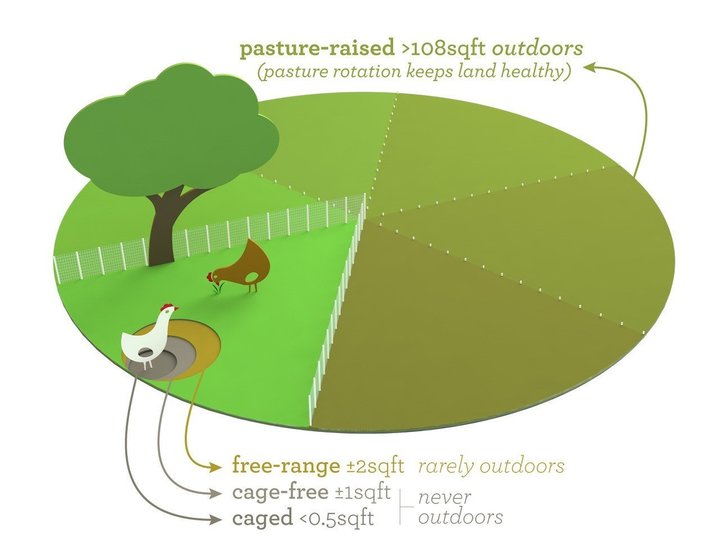
Do you love eggs as much as we do??? They are great for breakfast, lunch or dinner. Scrambled, over-easy, poached, frittata, egg casserole, egg salad, hard-boiled…they truly are “the incredible, edible egg”! In fact, in 2018 the US consumption of eggs was estimated at 278.8 eggs per person and is over a $10 Billion/year industry [1].
BUT…!
How do you decide what eggs to buy when you are at the grocery store? There are so many choices it can be overwhelming. As an In Demand Woman, you want to be able to make a quick decision, choose your eggs and get the heck out of the store; but you also care about how the hens are treated and the quality of the eggs.
Unless of course you raise chickens on your own farm or in your backyard, the options are plentiful. We wanted to break it down for you so you know exactly what you are getting.
CAGED
Sadly, 90% of commercially sold eggs in the US come from hens that have never seen the light of day [2]. They live in cages that only have 67-square-inches of space. This is not preferable to our environment or the chickens!
CAGE-FREE
While cage-free may sound more humane, the life for these hens is only slightly better than those that are caged. Eggs coming from hens living a cage-free existence are only required to have less than 1 square foot of space each and they live indoors only. These hens consume a diet of corn or soy, which is not preferable.
FREE-RANGE
These hens have a bit more living room, at an allocation of 2 square feet per bird. They are also entitled to see the

sunshine and outdoors. That said, these hens don’t necessarily make it outdoors
to eat the bugs, grass and grubs they would prefer to subsist on. While the USDA requires they have access to the great outdoors, there is no guarantee that actually happens.
PASTURE-RAISED
This designation is not regulated by the USDA, but it is the most humane option for the hens. For a farm to be considered “Certified Humane”, it has to allow 108 square feet of pasture for the hens to roam and also barn access for indoor living. Pasture raised hens have more room to run around and consume bugs and other fresh food.
While cost of eggs is always a factor when deciding which ones to buy, studies have shown that pasture-raised hens produce healthier eggs. These eggs contained twice as many omega-3 fats, three times more vitamin D, four times more vitamin E and seven times more beta-carotene then hens raised on corn and feed.
One final note about pasture-raised eggs. While the USDA doesn’t currently have regulations on pasture-raised hens, farms can get a “Certified Humane” pasture seal which designates the human treatment of these birds. Vital Farms is an example of a farm that sells pasture-raised eggs with a “Certified Humane” seal of approval, and you can find them sold at most local grocery stores [3}.
We hope this helps clarify the difference between the choices you have when shopping for eggs. While it may make only a small impact by choosing to personally only purchase “Certified Humane” pasture-raised eggs, it is one way you can make a difference for our planet one carton of eggs at a time.
References:
https://www.statista.com/statistics/183678/per-capita-consumption-of-eggs-in-the-us-since-2000/
https://certifiedhumane.org/article-explains-difference-pasture-raised-free-range-eggs/
https://www.huffpost.com/entry/defining-egg-labels_n_57ffaabfe4b05eff55820176

